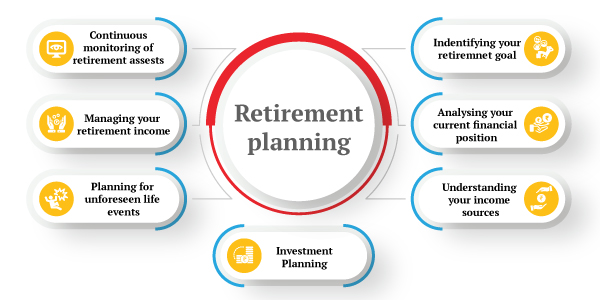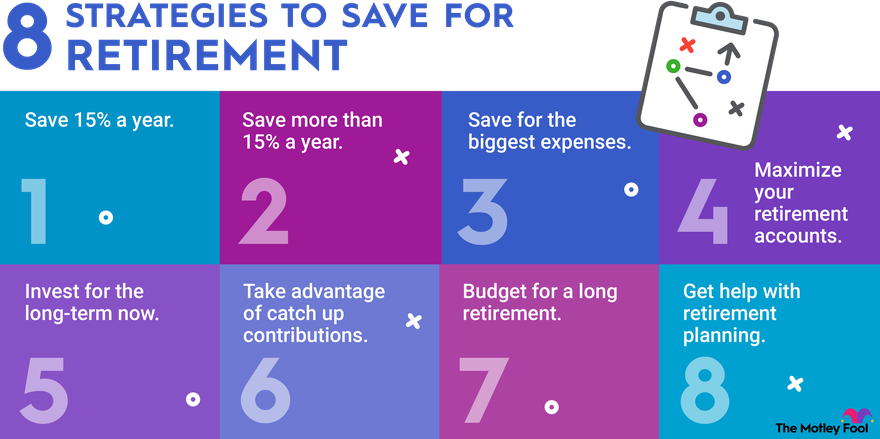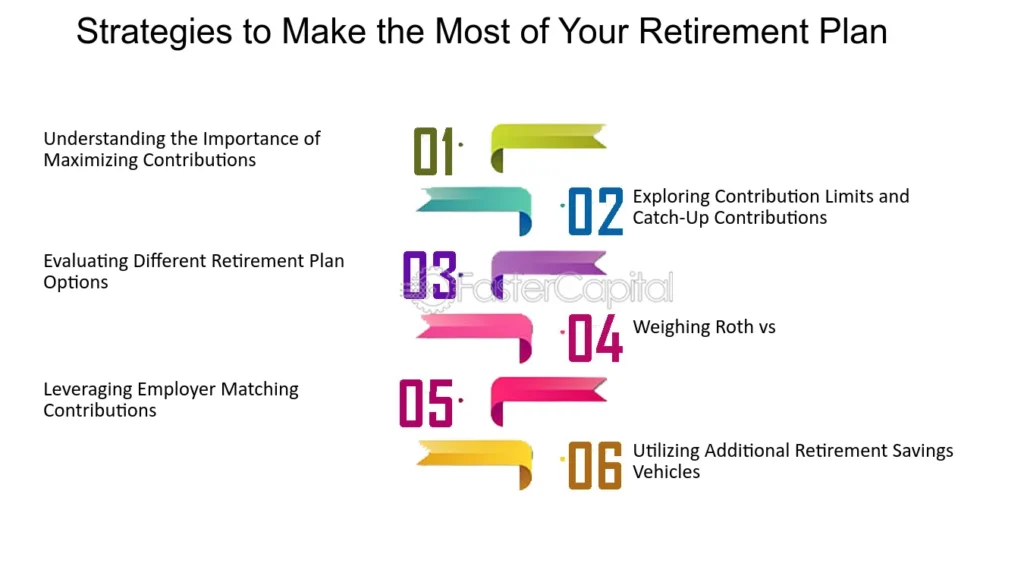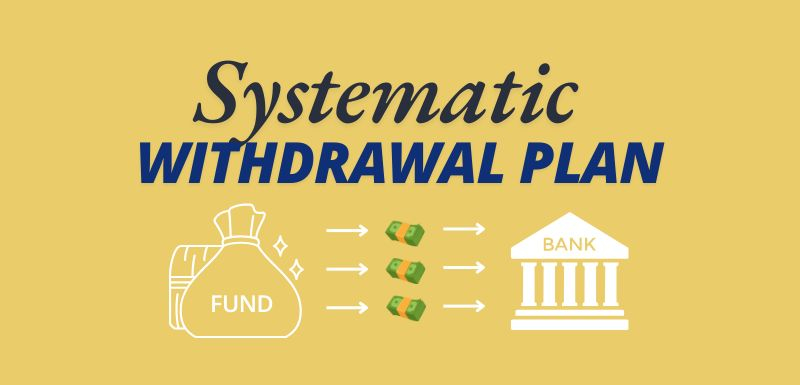Introduction: The Importance of Retirement Planning

Retirement is a stage of life that everyone will eventually reach, yet many people fail to prepare adequately for it.
Without proper planning, retirees can face financial struggles, stress, and an uncertain future.
Retirement planning is more than just saving money; it involves setting goals, investing wisely, and ensuring a steady income post-retirement.
Whether you are in your 20s or nearing your 50s, planning for retirement should be a priority.
In this guide, we will explore various aspects of retirement planning, including investment strategies, budgeting tips, and financial security measures to ensure you enjoy a comfortable and stress-free retirement.
Understanding Retirement Planning
Retirement planning involves setting aside funds and making strategic financial decisions to support yourself after you stop working.
It is a lifelong process that requires discipline, foresight, and adaptability.
Key Aspects of Retirement Planning:

- Determining Retirement Goals: Understanding the lifestyle you want after retirement.
- Estimating Future Expenses: Accounting for inflation, healthcare, travel, and daily needs.
- Creating a Savings Strategy: Deciding on savings accounts, pensions, and investment portfolios.
- Managing Debts: Reducing financial burdens before retirement.
- Planning for Unexpected Expenses: Having an emergency fund and insurance coverage.
How Much Money Do You Need for Retirement?
The amount of money you need for retirement depends on several factors, including your expected lifestyle, location, and healthcare costs.
Financial experts recommend the 80% rule, which suggests that retirees should aim to replace 80% of their pre-retirement income to maintain their standard of living.
Steps to Calculate Your Retirement Needs:
- Assess Current Expenses: Track monthly spending and project future costs.
- Factor in Inflation: Assume an average inflation rate of 2-3% annually.
- Estimate Social Security & Pension Benefits: Determine expected government and employer contributions.
- Use a Retirement Calculator: Many online tools can help you set realistic savings goals.
Best Retirement Savings Options

There are multiple investment and savings options available for retirement planning. Understanding each can help you make informed decisions.
1. Employer-Sponsored Retirement Plans
- 401(k) and 403(b) Plans: Tax-advantaged accounts where employers may match contributions.
- Pensions: Defined benefit plans offering lifetime income, though these are becoming less common.
2. Individual Retirement Accounts (IRAs)
- Traditional IRA: Contributions may be tax-deductible, but withdrawals are taxed.
- Roth IRA: Contributions are made with after-tax dollars, but withdrawals are tax-free.
3. Personal Investment Options
- Stocks and Bonds: Higher risk but offer growth potential.
- Mutual Funds and ETFs: Diversified investment options.
- Real Estate: Rental income and property appreciation can supplement retirement savings.
Strategies for Growing Your Retirement Savings

To ensure financial security, it’s essential to maximize savings and make smart investment choices.
1. Start Early and Contribute Regularly
The earlier you start saving, the more time your money has to grow through compound interest.
2. Take Advantage of Employer Matching Contributions
If your employer offers a 401(k) match, contribute enough to get the full match—it’s essentially free money.
3. Diversify Your Investments
Avoid putting all your money in one asset class. Diversification helps minimize risks and maximize potential gains.
4. Reduce Unnecessary Expenses
Cut back on discretionary spending and allocate more funds toward retirement savings.
5. Automate Contributions
Set up automatic deposits to your retirement accounts to ensure consistent savings.
Managing Debt Before Retirement

Eliminating debt before retirement can significantly reduce financial stress and allow you to enjoy your golden years with peace of mind.
Tips for Reducing Debt:
- Prioritize High-Interest Debt: Pay off credit cards and loans with high interest rates first.
- Refinance Loans: Lower your interest rates through refinancing options.
- Avoid New Debt: Reduce the use of credit cards and personal loans.
- Create a Debt Payoff Plan: Set realistic goals to eliminate outstanding balances.
Healthcare and Insurance Considerations
Healthcare is one of the most significant expenses in retirement. Planning ahead can help you manage these costs effectively.
Key Healthcare Planning Strategies:
- Enroll in Medicare: Understand eligibility and coverage options.
- Consider Long-Term Care Insurance: Covers nursing home and assisted living costs.
- Health Savings Account (HSA): Tax-advantaged savings for medical expenses.
Creating a Retirement Budget
Once you retire, your income may come from multiple sources, including savings, investments, and social security.
Creating a budget will help you manage expenses and maintain financial stability.
Steps to Create a Retirement Budget:
- List Fixed Expenses: Rent, mortgage, utilities, insurance.
- Account for Variable Expenses: Travel, dining, entertainment.
- Plan for Healthcare Costs: Set aside funds for medical expenses.
- Adjust for Inflation: Ensure your savings grow to maintain purchasing power.
Alternative Income Streams for Retirement
Beyond savings, consider additional income sources to enhance financial security.
Options for Extra Income:
- Part-Time Work or Consulting: Utilize your expertise.
- Passive Income from Investments: Stocks, dividends, and rental income.
- Side Businesses or Hobbies: Monetize skills like writing or coaching.
Smart Withdrawal Strategies for Retirement Funds

Withdrawing retirement funds wisely ensures that you don’t outlive your savings.
Common Withdrawal Strategies:
- The 4% Rule: Withdraw 4% of your savings annually.
- Required Minimum Distributions (RMDs): Follow legal withdrawal mandates for retirement accounts.
- Withdrawal Buckets: Divide savings into short-term, medium-term, and long-term investments.
Safeguarding Against Inflation and Market Risks
Economic fluctuations can impact retirement savings. Strategies to mitigate risks include:
- Investing in Inflation-Protected Securities (TIPS).
- Maintaining a Balanced Portfolio.
- Keeping Emergency Savings for Market Downturns.
Securing Your Legacy: Estate Planning & Inheritance
Estate planning ensures your assets are distributed as per your wishes.
Essential Steps for Estate Planning:
- Draft a Will and Trust.
- Appoint Power of Attorney & Healthcare Proxy.
- Minimize Estate Taxes Through Strategic Gifting.
Key Takeaways for a Financially Secure Retirement
Planning for retirement requires discipline, strategic investment, and continuous financial assessment.
By starting early, diversifying investments, managing expenses, and preparing for unexpected costs, you can ensure a comfortable and stress-free retirement.
Frequently Asked Questions (FAQs)
1. When should I start saving for retirement?
The sooner, the better! Starting in your 20s or 30s allows for compound growth, but it’s never too late to begin.
2. How much should I save each month?
A general rule is to save 15-20% of your income, but this depends on your retirement goals and lifestyle.
3. What if I haven’t started saving yet?
Start immediately, cut unnecessary expenses, and explore additional income sources to boost savings.
4. What is the safest investment for retirement?
Diversified portfolios, index funds, bonds, and retirement accounts like 401(k)s and IRAs are safer options.
5. How do I avoid outliving my savings?
Create a withdrawal strategy, invest wisely, and plan for inflation and unexpected expenses.
By following these strategies, you can confidently secure your financial future and enjoy a rewarding retirement.